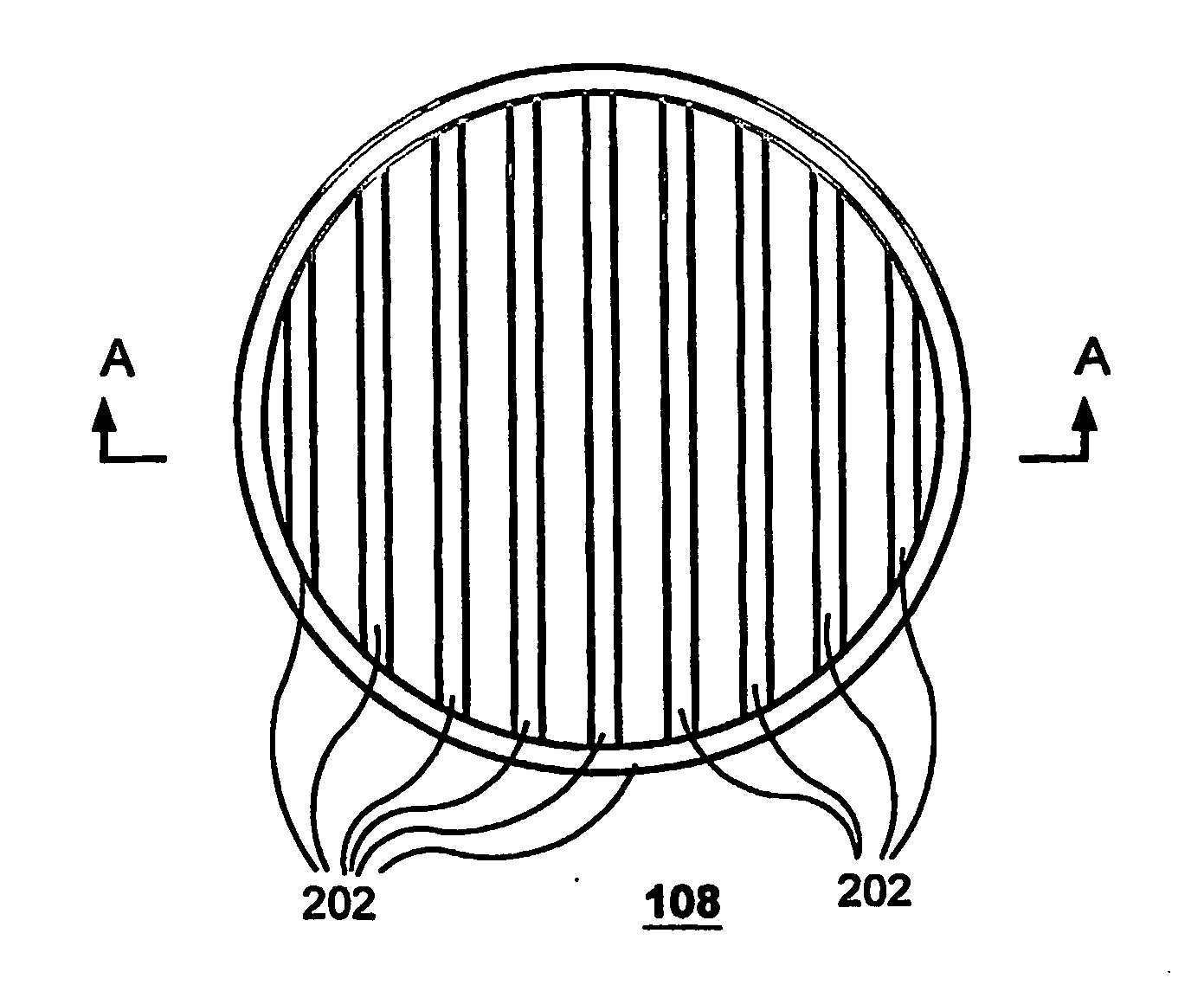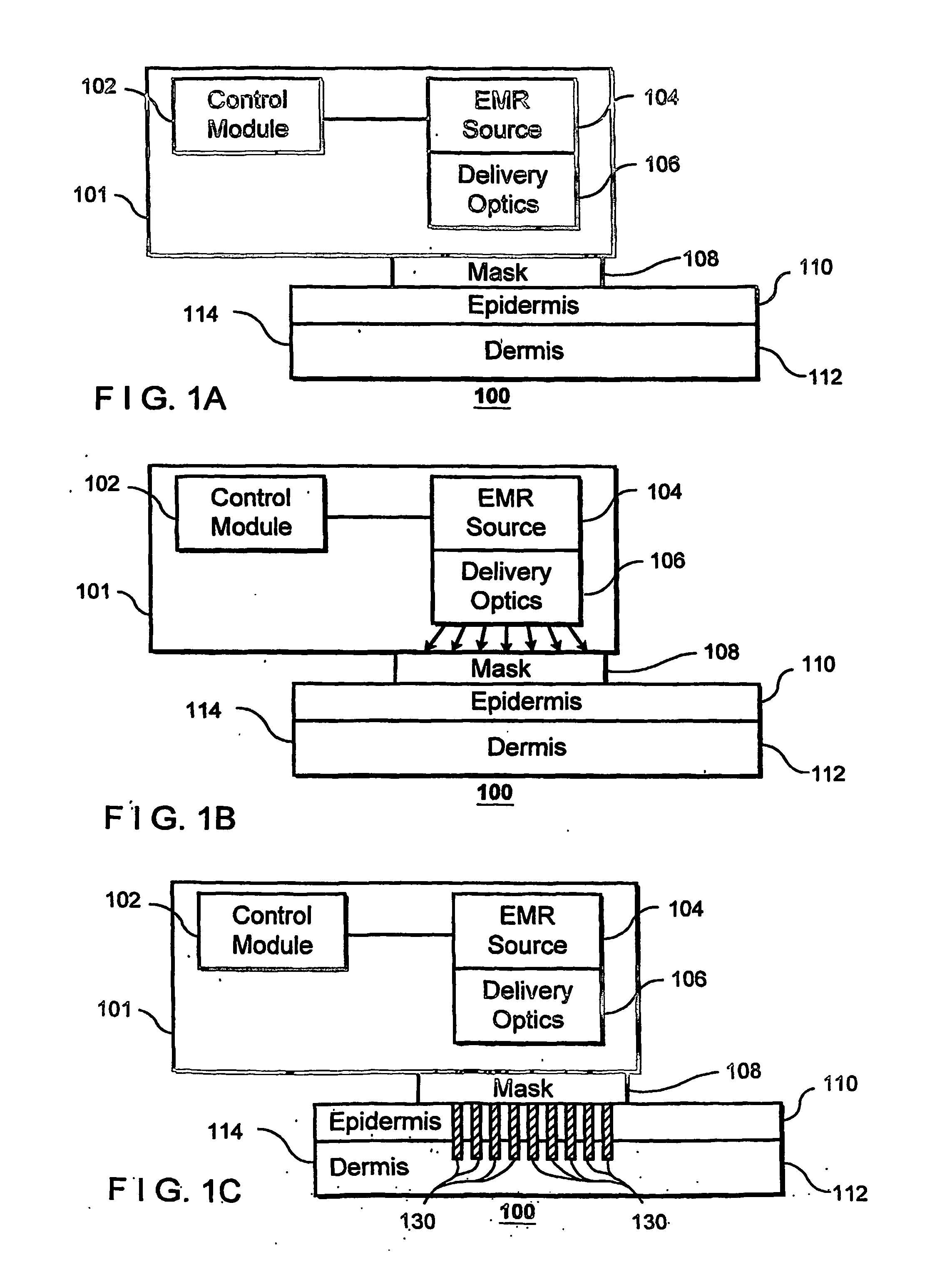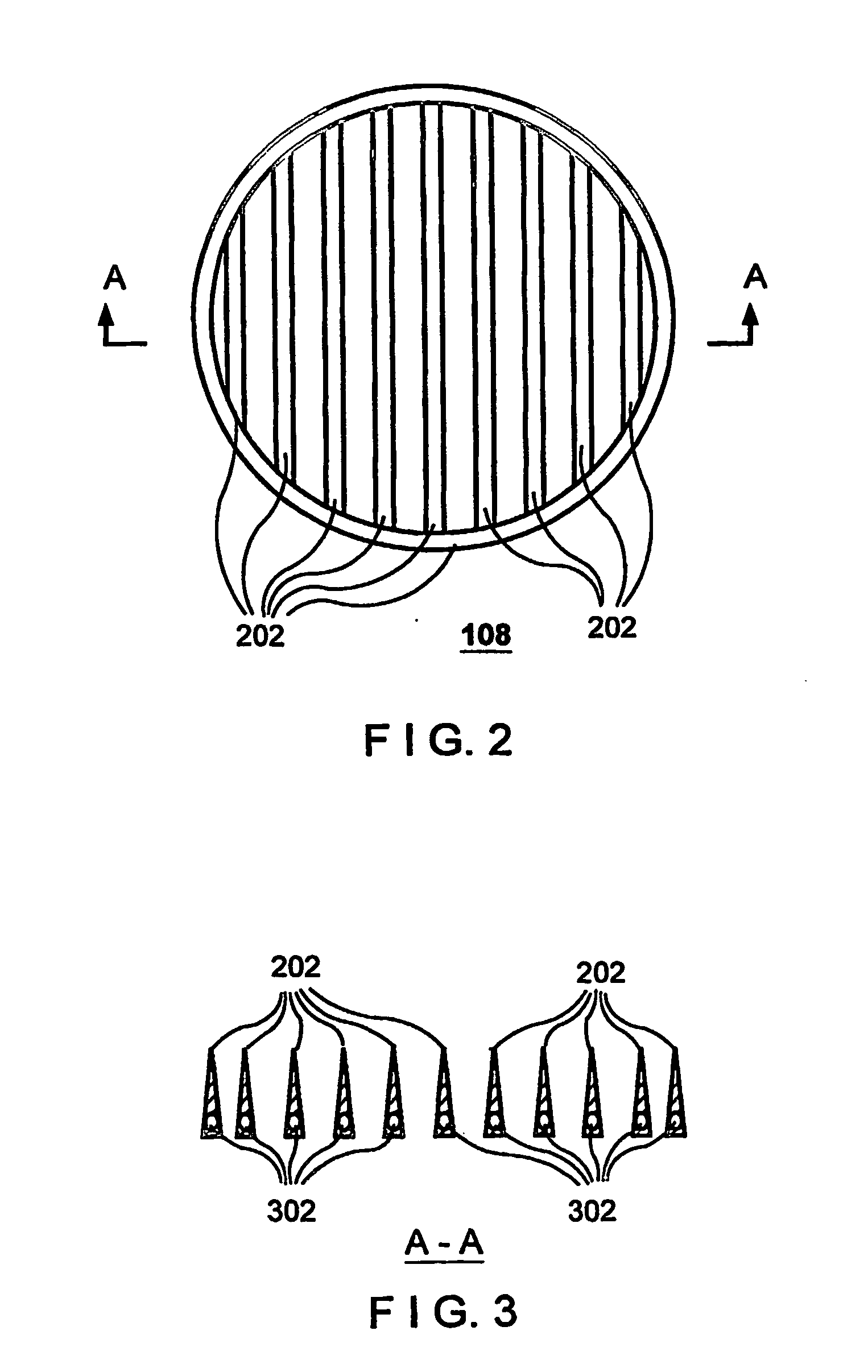Method and apparatus for dermatological treatment and fractional skin resurfacing
a fractional skin and dermatological treatment technology, applied in the field of dermatological treatment and fractional skin resurfacing, can solve the problems of complex wound healing response of the skin, patients may experience major drawbacks, edema, oozing, burning discomfort, etc., and achieve the effect of safe and effective treatment and minimal side effects
- Summary
- Abstract
- Description
- Claims
- Application Information
AI Technical Summary
Benefits of technology
Problems solved by technology
Method used
Image
Examples
Embodiment Construction
[0033]FIGS. 1A-9 illustrate various embodiments of a method and apparatus for fractional resurfacing of a target area of skin. Generally, the exemplary methods and apparatus deliver an electromagnetic radiation to the patient's skin defined by various patterns, so as to induce thermal injury of the skin surface corresponding to such patterns and involving only a fraction of the targeted surface area of the skin. Such technique combines the efficacy of ablative resurfacing procedures with the minimal side effects of non-ablative procedures. The delivery of the electromagnetic radiation to the skin in a predetermined pattern is achieved by either masking parts of the target area of the skin surface in order to protect the masked parts of the skin surface from the electromagnetic radiation, or by utilizing a light beam of relatively small diameter which is scanned across the skin surface by various means in order to generate a specific pattern for affecting superficial thermal skin inj...
PUM
 Login to View More
Login to View More Abstract
Description
Claims
Application Information
 Login to View More
Login to View More - R&D
- Intellectual Property
- Life Sciences
- Materials
- Tech Scout
- Unparalleled Data Quality
- Higher Quality Content
- 60% Fewer Hallucinations
Browse by: Latest US Patents, China's latest patents, Technical Efficacy Thesaurus, Application Domain, Technology Topic, Popular Technical Reports.
© 2025 PatSnap. All rights reserved.Legal|Privacy policy|Modern Slavery Act Transparency Statement|Sitemap|About US| Contact US: help@patsnap.com



